- Postat av: Mattias
- Kategori: Branding
Choosing a brand or company name
For the uninitiated, it can be difficult to know how to think when it comes to choosing a name for a brand, product or company.
In this article, we share how we think when naming products, brands and companies. We also look at the most common mistakes entrepreneurs and the uninformed make and how they can be easily avoided. Norrhavet’s founder Mattias Björk is a trained brand strategist and has extensive experience in naming companies, products, associations, services and brands. Here, he shares his top tips and thoughts on how to go from ignorance to knowledge to choose a name.
Company names must be unique
The name must be different from other companies’ or associations’ names. Company names must not be the same as trademarks. You must not be deceived by the name, for example, if you sell furniture, it must not be called anything with “car”, unless you accept cars. A company can be called one thing legally and use a brand name externally that is called something else.
The name should not explain what the business does
A classic mistake many people make is to come up with a name that tells you what services the business offers. That in itself is not wrong and there are many examples of when the combination works very well. But you shouldn’t explain to the target audience what you do by name, because that is the function of communication. By explaining to the target audience what the company does through the name, you limit your growth and breadth over time, because even if you are fixed on what the business will work on now, you don’t know how it will change over time. “Söder tandläkarmottagning” may work until the company wants to expand the business with a shop, several clinics and an operation outside the country. Then they have to change their name, rethink and face a lot of work they could have avoided in the first place.
[mailerlite_form form_id="1"]
NEVER start with the logo first
The foundation of a professional result is very much about research, thinking and mapping. This is also where extremely many people grope in the dark because they don’t have the knowledge and tools to move forward, instead they take shortcuts by focusing on the visual and based on that feeling choose names – if you’ve been through that process before then you might also know that along the way that product will fail because it’s not well thought out. In the worst case, the consequences of this process could be disastrous.
Instead, follow the practices of the North Sea:
- Map out what the company, brand or product should respect, achieve, contribute, what the owners want to achieve, what the target audience can expect, what services are available initially, what functions are being developed, what the feeling should be when you see the product, brand or company, how you see the development going forward and what it will look like in five years.
- Write a short brief about what the company, business, product or brand will do/offer and represent. It should be written so that anyone can understand what it is you are trying to achieve and do and who the target audience is. Here you also take into account the feeling that the recipient/user/customer should feel when using/experiencing the product, service or company.
- Brainstorming of names (use whiteboard or digital one). Let go of your inhibitions, get creative and write as many different combinations of names as possible. We never settle for less than 100 words when making a nomination. Think high and low, write down everything that comes your way and assume that more is better, look high and low, look for inspiration from other industries than your own, check other countries, look at trends, play with synonyms, combinations of words that were in the survey, invented words and words that do not belong at all. (Further down in the article you will get insights into how you should think when it comes to choosing a name, so read the whole article before you start with the practice).
- Check all names if they are available as domains (.se or .com mainly). Those that are busy are deleted immediately.
- Check the meaning of the name and what records exist about the name through a google search. If something obscure comes up or if it’s obviously a company that owns most of the search results, you can remove the name.
6. open translate.google.com and type in the names and translate them into as many languages as you can to make sure that the word is not translated into something that could damage the name or the meaning of the name in a wrong way, for example when the car manufacturer HONDA named a car model after a Swedish gender word.
7. Write all the words/names on a whiteboard or digital board. Gather/invite half a dozen (6 (or more, but max 12)) people you think have good insights and whom you look up to and give them the letter. Ask them to read it silently at first and then you read it out loud to everyone. Then you give them the task to put a red mark/dot next to 10 names. When all people have marked their 10 names, erase/delete the other names/words.
8. Erase the dots marked next to the words. Repeat the process above, but now the persons can only put three dots. After the process is complete, the function of the invited individuals is also clear.
9. Now you have managed to filter the results to a few names and also checked that these are available as domains. Now you select three (maximum 5) names that qualify for the final stage.
10. Check for competition – Now you need to check if the name is protected, registered, available or locked in the country you will be operating in but also against other databases that control other markets and continents/countries.
11. Audience-check: This process involves taking your results to the market/target audience to see what they say. A simple method is to print or create a power-pint/keynote with your name results and go downtown and ask people what they think sounds best based on your brief. Once you have done this, you have a qualitative result on what the market recommends and thinks.
12. you now have a result that is both quality controlled at several stages and assured to the market. Now you choose the name based on the above results.
Workshops for brave people
Our workshops become a momentum for the company and are aimed at those who want to develop the company, a product or a service. We don't mess around or scratch the surface, we go straight to the core of what leads to development and work around it so you can quickly benefit from the new knowledge.
How to choose name
A brand, product or company should not tell you what the business, product or brand does. It is the function of communication. So you shouldn’t tell people through the name what the brand, business or product does (but you can certainly combine words to create something recognizable but not directly related to what the business or similar does). This means that you should choose a word that may have nothing to do with anything, i.e. a made-up word or a word that has no meaning or that, combined with another word, functions as a word.
Examples of naming:
- Pelles mechanical workshop -> Pelles or Sellep (Pelles backwards)
- Sara’s family home -> Samos or Tryggla (Samos from a Greek island (relaxation) and Tryggla (made-up name))
- Vabro Rail Group -> Vabro (simplified) or Vadakt (synonymous with viaduct and converted)
- Sprinkler -> [Varumärkesnamn] + Sprinkler or [Varumärkesnamn] + Burst (made-up name related to what the product does)
- Karl’s Soda Company -> Punch Pop (made-up name) or Karl’s Nation (the combination of Karl and Nation (from the vision that everyone must try))
Famous companies with made-up names, combined names or names with historical value
- IKEA
- Skanska
- Klarna
- Spotify
- Voi
- ICA
- Scania
- H & M
- Volvo
- ABB
- Investor
- AstraZenica
- Apple
- Swedish Match
- Red Bull
- With several…
Choosing a name for a product
The naming of a product can often be combined with the brand name but it can also be stand-alone based on how the product will be used. In many industries, it is common to freeze products, which means that the product is subordinate to a brand and then it is the brand that is presented first and then the name of the product. For example, in the case of Apple, they categorize their brands first, such as “Ipad” and then the product “Air” or “Pro”. And the full hierarchical categorization is Apple (company name) -> Ipad (brand name) -> Pro (product name). At Norrhavet, we recommend keeping the name as simple as possible so that more people remember it. If you can say the word once and it sticks, you’ve succeeded.
Choosing a name for a brand
A trademark can represent many things, including an entire company that has chosen to emphasize the trademark over the company name, but also be subordinate to the company name. When choosing a brand name, you should consider whether it should be subordinate to the company name or stand-alone, and by stand-alone, it means that the brand acts on its own without direct connection to the company name. If the case is the latter, an example could look like this: Brand name -> Product name, product name, product name, product name, etc. If the brand is subordinate to the company name, the layout is normally as follows: Company name -> Brand name -> Product (and subordinate to the product you can, for example, choose color and shape, quantity and more)
Choosing a company name
When choosing a company name, you should consider whether the company should be the name you want to front (which is the most common way and clearly recommended). Normally, you can split off and sell brands and products underlying the company, it becomes more difficult if you choose to front the brand over the company name. But it does happen and is not uncommon. An example where the company behind the products is less visible is the company BHG Group. Most people may not be aware of them, but consumers and businesses buy products from their brands all the time – they own brands such as Byggahemma, Trademax, Chilli, Furniturebox, Sleepo, Svenssons i Lammhult, Vitvaruexperten, Hafa, and others. BHG has allowed all the brands to operate freely and has not made any link between the different brands or an overt strategy to make the company behind the brands visible.
Mattias Björk collected thoughts on naming
To get the best possible result, you need to ask the right questions first, before you start with the logo and the solution itself. Create a workshop, invite a number of people, but no more than 12 people, and let them float around names in general. Don’t limit anything, but let the collected words take shape. The name should not explain what the business does, it is the function of communication. Think about the approach if you are naming a company name, a brand, a service or a product. Follow our practices. If you want expert help, we are here for you – start projects here – hey@norrhavet.com






